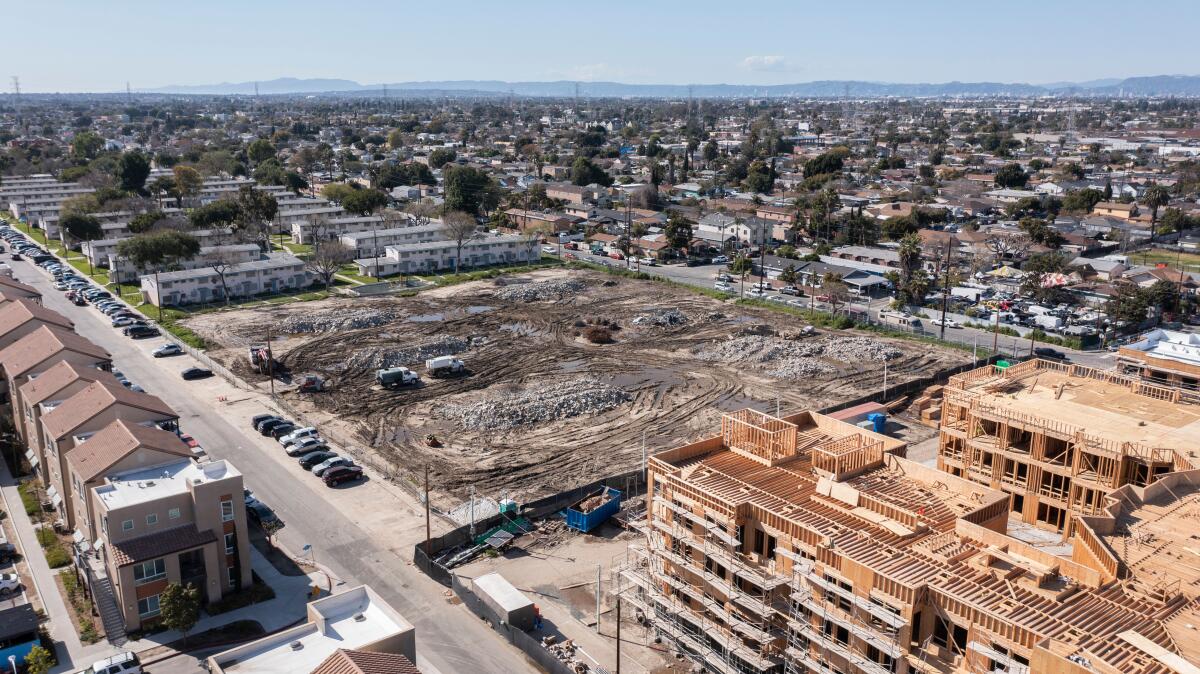Opportunity Zone Housing Markets Still Tracking Along with Broader U.S. Housing Market

- Share via
Median home values decreased during fourth quarter of 2023 in just over half of opportunity zones targeted for economic redevelopment around U.S.; price-decline trends inside zones again follow closely with national market patterns.
Irvine-based ATTOM, a leading curator of land, property and real estate data, has released its fourth-quarter 2023 report analyzing qualified low-income Opportunity Zones targeted by Congress for economic redevelopment in the Tax Cuts and Jobs Act of 2017. In this report, ATTOM looked at 3,667 zones around the United States with sufficient data to analyze, meaning they had at least five home sales in the fourth quarter of 2023.
The report found that median single-family home and condo prices dropped from the third quarter of 2023 to the fourth quarter of 2023 in 52% of Opportunity Zones around the country with sufficient data to analyze, declining by more than 3% in close to half.
Those downturns, in and around low-income neighborhoods where the federal government offers tax breaks to spur economic revival, tracked closely with nationwide price trends as a decade-long boom in the U.S. housing market showed signs of slowing down. The latest trends also continued a long-term pattern of home values inside Opportunity Zones moving alongside broader nationwide gains and losses for at least the last three years. That marked an ongoing sign of economic tides rising or falling inside some of the country’s most distressed communities along with other markets around the country.
Opportunity Zones even showed signs again of doing slightly better than other neighborhoods around the country during the fourth quarter of last year. For example, while prices generally decreased, a slightly larger portion of Opportunity Zones saw significant price increases in the fourth quarter compared to other locations around the U.S.
“The fourth quarter of last year certainly wasn’t a great one for Opportunity Zone home values, with more losses than gains. But within the bigger picture, those areas keep riding national coattails, whether home values are going up or whether they are going down. Nothing jumped out as much worse than what happened throughout the nation,” said Rob Barber, CEO of ATTOM. “This has clearly become an extended story as the zones continue to attract home-buyer interest in a very tight housing market. More broadly, it also shows the kind of economic strength inside Opportunity Zones that the legislation is designed to use as a springboard to attract investors.”
Opportunity Zones are defined in the Tax Act legislation as census tracts in or alongside low-income neighborhoods that meet various criteria for redevelopment in all 50 states, the District of Columbia and U.S. territories. Census tracts, as defined by the U.S. Census Bureau, cover areas that have 1,200 to 8,000 residents, with an average of about 4,000 people.
Amid the economic limitations of Opportunity Zones, typical home values in most of those neighborhoods continued to fall well below those in other markets around the nation during the fourth quarter of 2023. Median fourth-quarter sales prices were less than the U.S. median sales price of $333,000 in 79% of Opportunity Zones. That was about the same portion as in earlier periods over the past year. In addition, median prices remained under $200,000 in 51% of the zones during the fourth quarter of 2023.
Considerable price volatility also remained in place inside Opportunity Zones, with median values either dropping or increasing by at least 5% in almost three-quarters of those locations from the third quarter of 2023 to the fourth quarter. That again likely reflected the small number of sales in many zones.